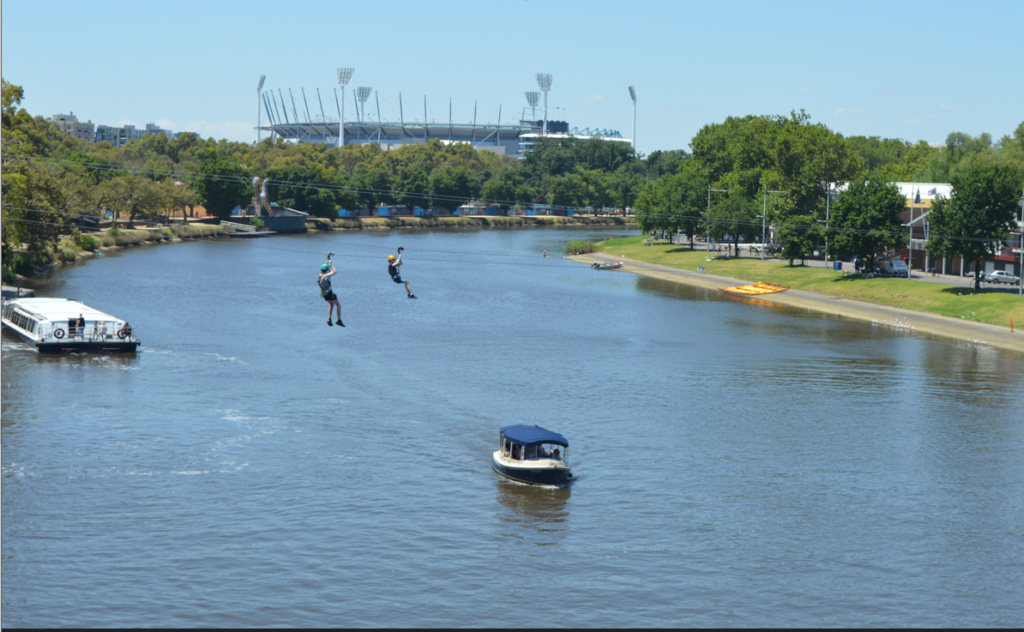
The pair Zip-lining across the Yarra River aren’t far from the site of the Australian Open. In the distance is the famed 100,000-seat Melbourne Cricket Ground and to the lower right the Tennis Australia headquarters building at Melbourne Park.
In hindsight, 2023 was not quite a vintage year for the Australian Open. The main reason being the principal players who didn’t play at all or who did but were absent once the event got down to its nitty-gritty final stages.
On the women’s side that would include world No. 1 Iga Świątek and No. 2 Ons Jabeur as well as No. 3 Jessica Pegula and No. 4 Caroline Garcia – all gone before the last eight except losing quarter-finalist Pegula.
The men’s tournament was desperate for a legitimate threat to the all-conquering Novak Djokovic. But subpar, defending champion Rafael Nadal went out in round two, No. 1-ranked and US Open champion Carlos Alcaraz (right leg injury) didn’t even make it to Australia and Holger Rune, who beat Djokovic in the Paris final in November, catapulting him to the frontline of challengers, was ousted in a thriller by Andrey Rublev in the round-of-16.
There was also no-show, host-nation drawing card Nick Kyrgios (left knee) as well as the premature exits of emerging stars such as second-seeded Casper Ruud, No. 6 Félix Auger-Aliassime and No. 8 Taylor Fritz, all three of whom had all shown a lot of promise at the end of 2022.

Positive for the women was that the downer memories of big names faded, replaced when No. 5 seed Aryna Sabalenka defeated reigning Wimbledon champion Elena Rybakina 4-6, 6-3, 6-4 with captivating, hyper-aggressive tennis in the final. The 24-year-old Belarussian’s winsome personality and back story were hard to resist.
Her struggles at the AO a year ago – six double faults in a single game – compared to just seven this year in the whole two-hour and 28-minute final, set up a Sabalenka fairy-tale ending to the 2023 tournament and its slogan, “The Story Starts Here.”

Rod Laver Arena was the place to be for Sunday night’s men’s final between Djokovic and No. 3 seed Stefanos Tsitsipas. Unfortunately, there was little of the drama of the women’s championship match. Djokovic, over any qualms remaining about his left hamstring injury after his quarter-final win over Rublev, reached a level that was untouchable for the 24-year-old Greek, or anyone else at this year’s event.
He beat Tsitsipas 6-3, 7-6(4), 7-6(5) and the historic significance of his victory – 10 Aussie Open titles, 22 Grand Slams overall and a return to the No. 1 ranking – overshadowed what happened during the two-hours and 56-minutes of on-court action.
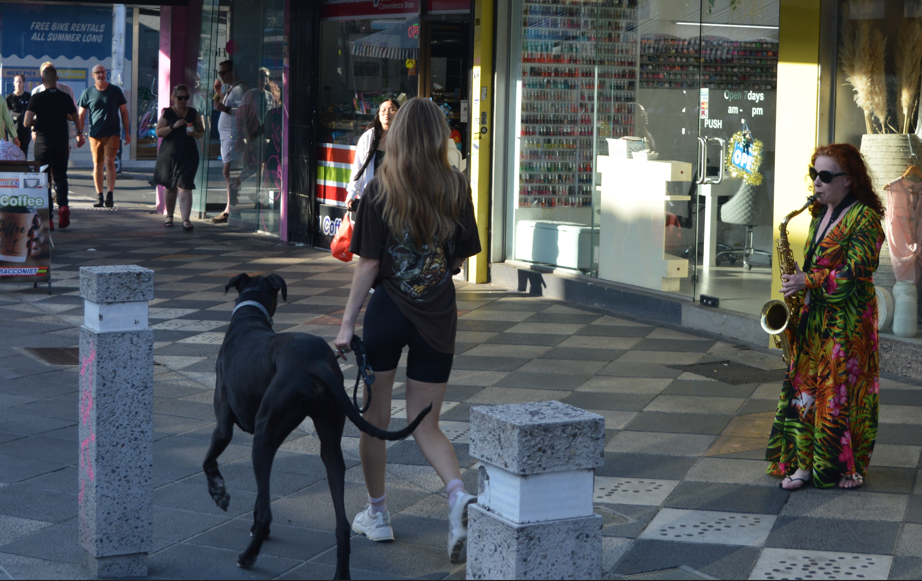
St. Kilda Beach, on Port Phillip Bay, is a hip, cool place to hang out in Melbourne. The saxophonist here, engrossed in her music, is just one example of the flora and fauna to be found on trendy Acland Street.
CANADIANS AT THE AUSSIE OPEN
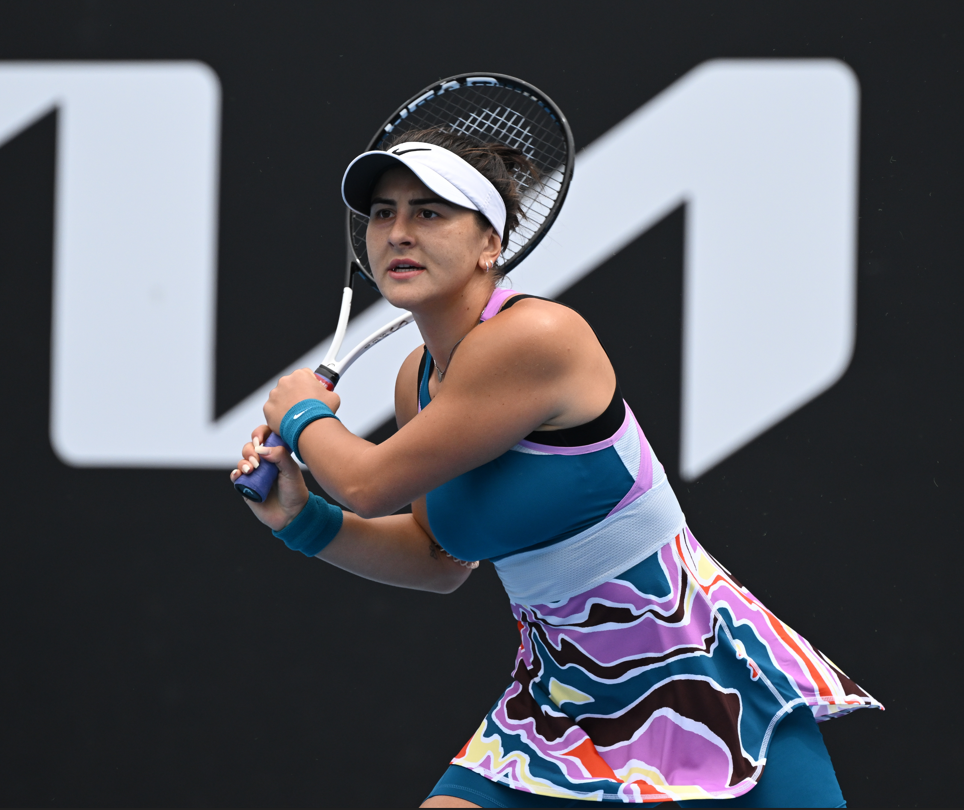
BIANCA ANDREESCU: The greatest mystery among the Canadians was Andreescu and her 2-6, 7-6(7), 6-4 second-round loss to No. 100-ranked qualifier Cristina Bucsa of Spain. That followed her impressive 6-2, 6-4 opening-round win over No. 25 seed Marie Bouzkova.
The first set against Bucsa went as expected but then Andreescu gradually lost her aggressive tennis and her confidence. It seemed all the more mysterious when Bucsa then lost 6-0, 6-1 to top-seed Iga Świątek in the third round. A match-up against the world No. 1 was what Andreescu really yearned for.
GENIE BOUCHARD: Fit and motivated to start the new year, she lost in the first round of qualifying – 6-2, 1-6, 6-4 to 18-year-old Ashlyn Krueger. Thirteen years after she first played in the junior event at Melbourne Park, Bouchard, 28, came on strong after a sketchy first set and seemed poised to finish off the gangly 6-foot-1 American. She had a break point and a put-away forehand near the net at 4-all in the final set, but she missed it into the net.
Krueger then held and broke serve in the following game to end Bouchard’s hopes. After winning a round of qualifying in Auckland the previous week, Bouchard had to withdraw with a case of food poisoning – not the ideal preparation for the AO.
GABRIELA DABROWSKI: It was a disappointing fortnight for the No. 7-ranked doubles player. She and Mexican partner Giuliana Olmos, the No. 3 seeds, were beaten 7-5, 6-2 by the American/Russian duo of Caroline Dolehide and Anna Kalinskaya in the third round. They did have a solid second-round win over the Swiss pairing of Belinda Bencic and Jil Teichmann.
In mixed doubles, Dabrowski and Australian Max Purcell, seeded No. 8, were ousted in the second round by wild-card Aussies Lisette Cabrera and John-Patrick Smith.
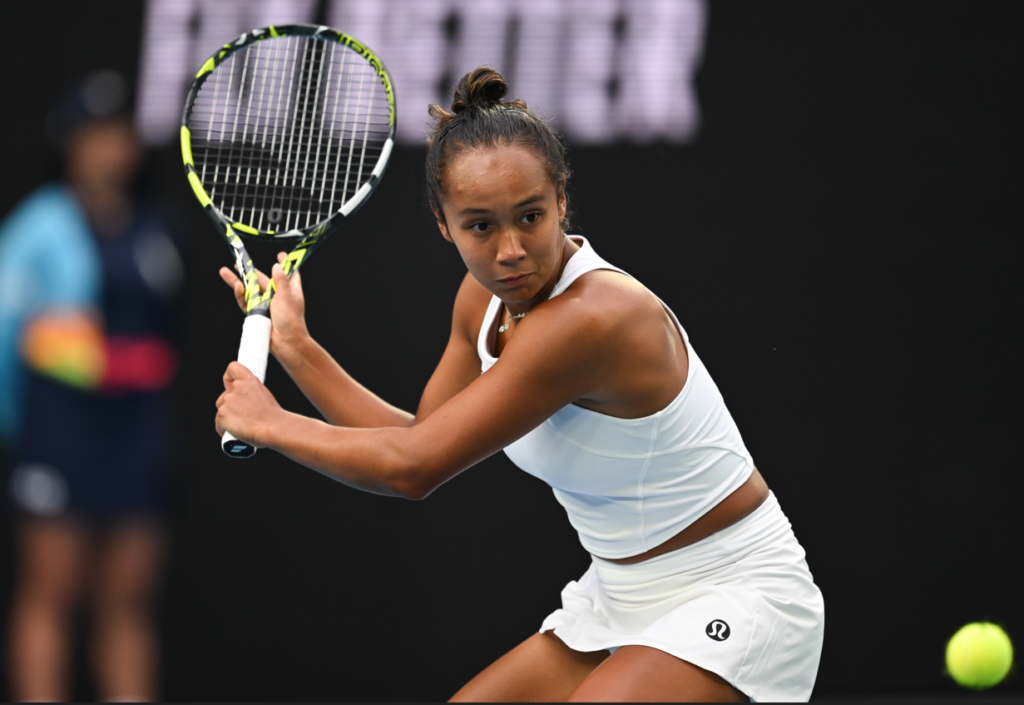
LEYLAH FERNANDEZ: After losing just four games in her first two-rounds pre-Aussie Open at the Auckland WTA 250, Fernandez faced the left-handed, brute force of Belgian powerhouse Ysaline Bonaventure – indoors – and was beaten 6-4, 6-2.
In the second round at the AO, she lost 7-6(5), 7-5 to No. 4 seed Caroline Garcia after leading the first set tiebreak 4-0 and having a set point in the second. Two rounds later, a nervy Garcia lost 7-6(3), 6-4 to No. 45-ranked Magda Linette. Hard-luck Fernandez was playing well enough to have followed Linette’s eventual path to the semi-finals had she gotten past Garcia.
REBECCA MARINO: With a 1-1 record against Zhu Lin of China in their previous meetings, this time Marino was dominated from the baseline 6-2, 6-4 by the No. 87-ranked Chinese’s accurate, up-tempo ball-striking. Zhu proved what fine form she was in by going on to reach the fourth round with upsets of seeds No. 32 Teichmann and No. 6 Maria Sakkari.
KATHERINE SEBOV: The Canadian revelation of the 2023 Australian Open, the 24-year-old qualified with wins over No. 58-ranked Czech Linda Noskova, fresh from a runner-up finish in Adelaide to Sabalenka, No. 170 Priscilla Hon of Australia and No. 128 Simona Waltert of Switzerland.
It was an event of firsts for Sebov – her first Grand Slam main draw, her first ranking inside the top-200 at No. 190 and her first experience in a Grand Slam main stadium, Rod Laver Arena, where she was beaten 6-3, 6-0 by Garcia.
CAROL ZHAO: Bidding for her first main draw at a Grand Slam, the 27-year-old Zhao lost a soul-crushing, qualifying second round to No. 130-ranked Clara Burel 6-7(4), 6-4, 7-6[10-2]. Rarely does a match turn so dramatically as this one did. Zhao was on her way to victory ahead 4-0 and a point for 5-0 in the second set against a totally dispirited Burel.
There appeared no way back for the 21-year-old Frenchwoman, but Zhao then hit a regulation forehand over the baseline. A re-energized Burel won six games in a row and the set before she took the third seesaw set in a one-sided match tiebreak.

FELIX AUGER-ALIASSIME. He never got anywhere close to establishing a cruising altitude in Australia. He lost in the first round to No. 113-ranked Aussie Alexei Popyrin in Adelaide and then was outplayed after the first set in a 4-6, 6-3, 7-6(2), 7-6(3) loss to fast-rising, No. 71-ranked Czech Jiri Lehecka, 21, in the fourth round at Melbourne Park.
A late 2022 season finish at the Davis Cup Finals, and then an exhibition event in Dubai right before Christmas, may have meant he wasn’t as fresh for Australia as he would like to have been.
GABRIEL DIALLO: The 21-year-old from Montreal has made amazing progress in the past six months, going from No. 669 at the beginning of August to No. 227 before the AO qualies.
Diallo played Aleksandar Vukic in the first round and had four break points in the 26-year-old Aussie’s first two service games. He couldn’t convert any of them and Vukic, who went on to qualify, just needed a single break in each set to win 6-3, 6-4. It was a first real taste of the bigtime for the 6-foot-7 Diallo and should provide him with solid experience to build on.
ALEXIS GALARNEAU: The 23-year-old was playing his first Grand Slam qualifying and won his opening round 7-6(5), 6-2 over 27-year-old Ryan Peniston of Great Britain. In the second he faced another 27-year-old, Juan Pablo Varillas.
Galarneau won the first set on his fifth set point, after saving a set point, but gradually the No. 103-ranked Peruvian started to play more consistently from the baseline. That was the difference in the 6-7(8), 6-3, 6-4 outcome. Galarneau was game but Varillas had a little more moxie in key moments.
VASEK POSPISIL: After going through a 2022 late-season push – including winning the National Bank Challenger in Drummondville in his last event – to get direct entry to the 2023 Australian Open, Pospisil drew compatriot Félix Auger-Aliassime in the first round. He started great, taking a 5-0 first-set lead before beginning to suffer (leg) cramps at 5-4 in the second.
He wound up sweating through nine shirts before losing 1-6, 7-6(4), 7-6(3), 6-3 on a mild-ish evening. Both the (bad) luck of the draw, and his ongoing issue with cramps, conspired to make things thoroughly frustrating for an in-form Pospisil.
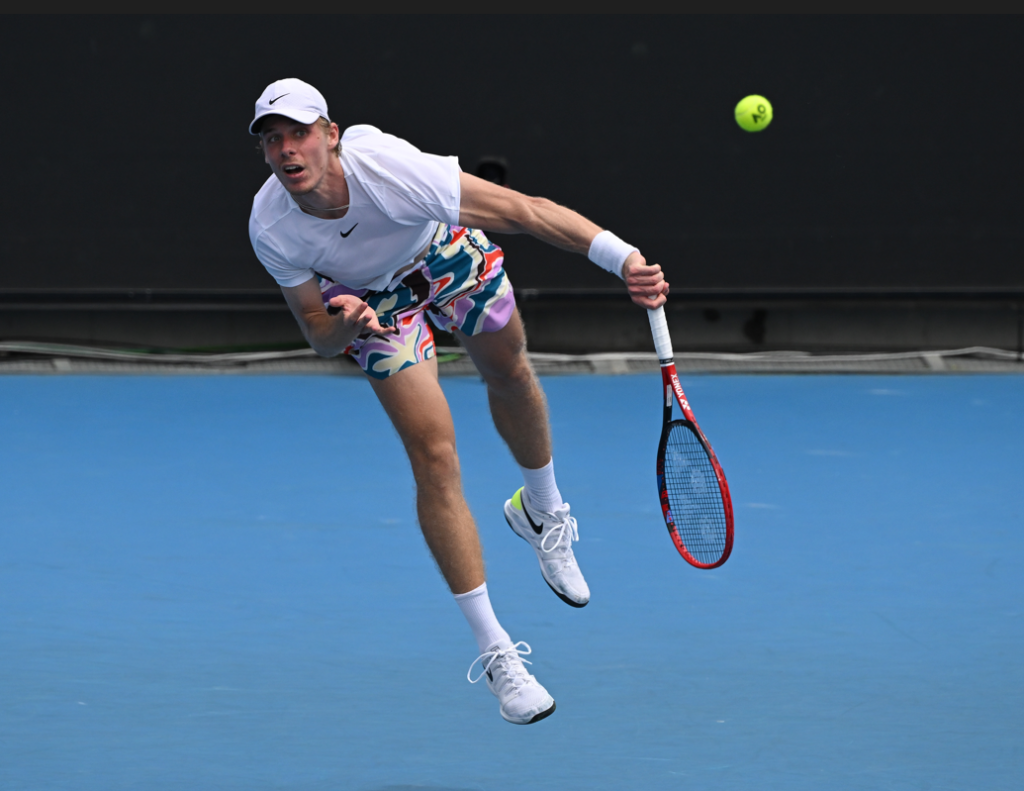
DENIS SHAPOVALOV: He reached the third round before going out to No. 10 seed Hubert Hurkacz 7-6(3), 6-4, 1-6, 4-6, 6-3. A poor sixth game in the fifth set to get broken ruined the momentum of his dominant play in the third and fourth sets.
But it was always going to be tough to win in five after dropping the first two sets, especially having served for the first at 5-4 and having a point for 3-0 in the second. Post-match, Shapovalov admitted to nerves being an issue, something he continues to work on.

The Young and Jackson hotel is at the crossroads of downtown Melbourne – Flinders and Swanston Streets. It has become more gentrified in recent years but in the days of 2002 champion Thomas Johansson, a lively group of young Swedes used to bunk there – getting fueled at the bar at 10 a.m. before heading off to nearby Melbourne Park to cheer and chant for their compatriot.



